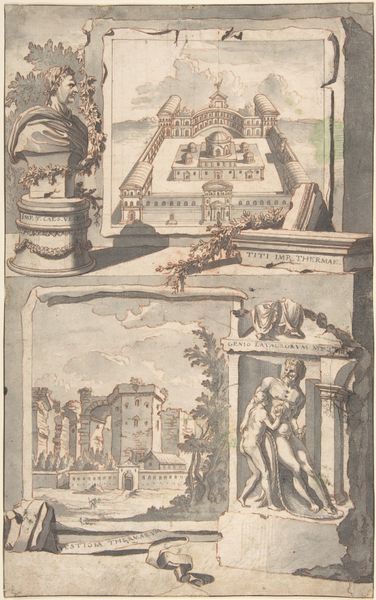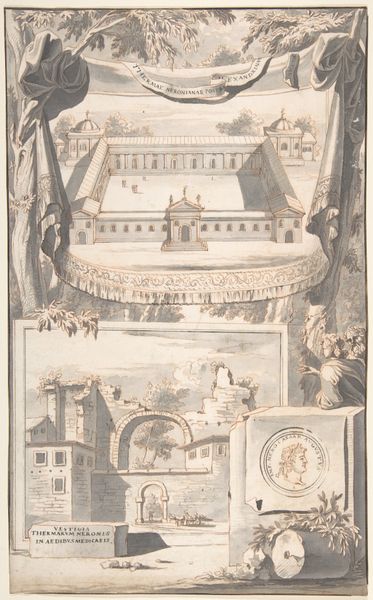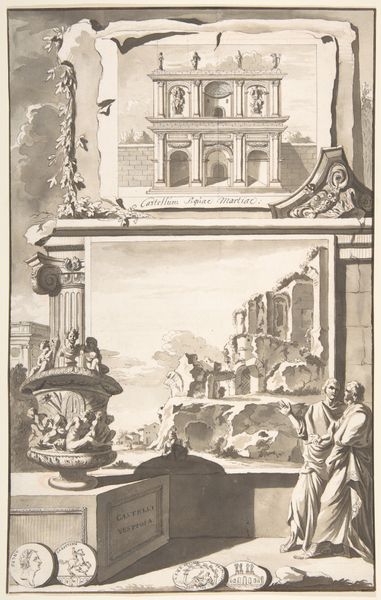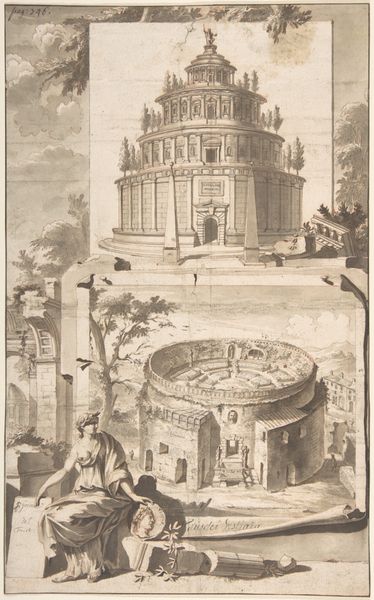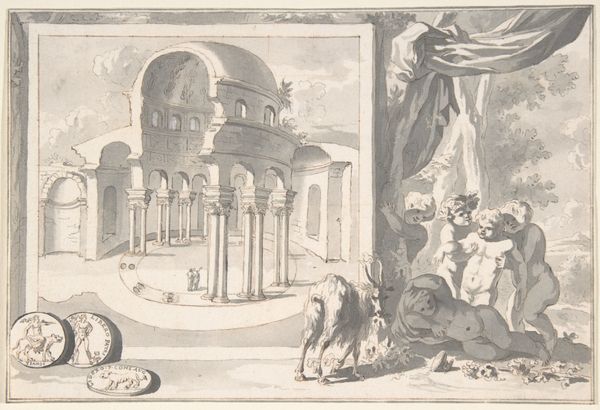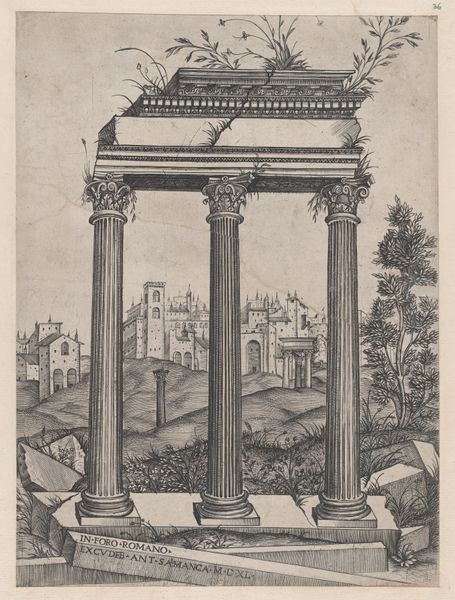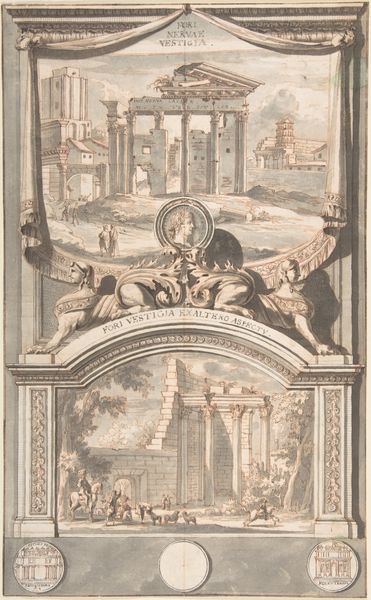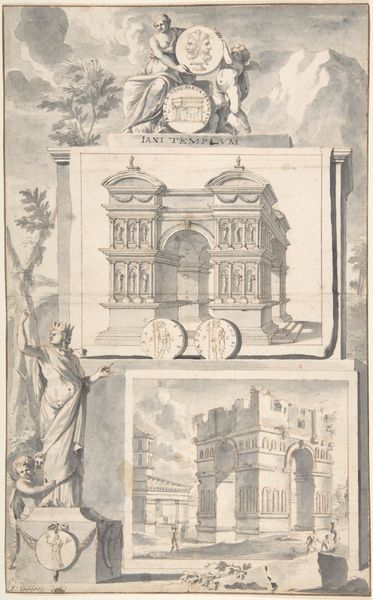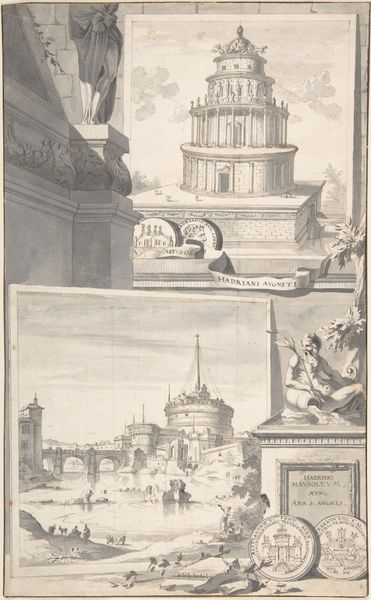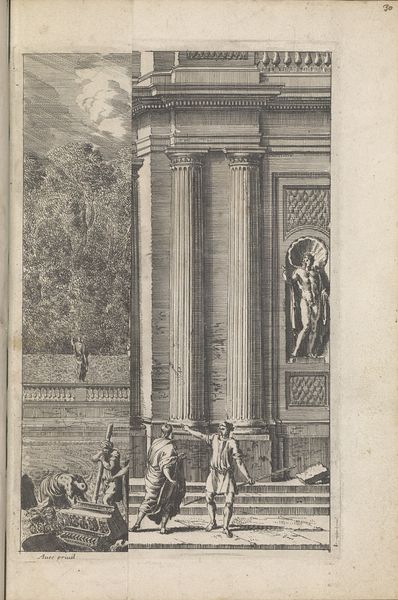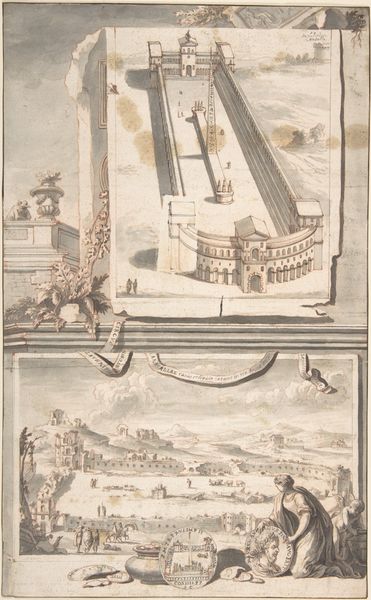
A Reconstruction of the Temple of Divus Claudius in Monte Coelio (above) and a View of the Ruins (below) 1690 - 1704
0:00
0:00
drawing, print, etching, ink, engraving, architecture
#
drawing
# print
#
etching
#
landscape
#
classical-realism
#
ink
#
engraving
#
architecture
Dimensions: 13 x 8 7/64 in. (33.0 x 20.6 cm)
Copyright: Public Domain
Curator: This is Jan Goeree's "A Reconstruction of the Temple of Divus Claudius in Monte Coelio (above) and a View of the Ruins (below)," dating roughly from 1690 to 1704. The piece combines drawing, etching, and engraving using ink. Editor: It evokes a melancholic atmosphere, a delicate dance between grandeur and decay. The monochrome palette enhances this feeling, creating a contemplative space. Curator: Indeed. Look at the contrast Goeree presents. The upper panel meticulously reconstructs the temple in its idealized form, a testament to classical architecture's enduring allure and human ingenuity. Editor: And the panel below shows us the real world, the temple as ruin, subject to the passage of time and the inevitable erosion of materials. The symbolic weight of that contrast—ambition versus reality—is compelling. What about the people populating these spaces? Curator: Ah, their presence gives the drawings scale, but it also underscores the Temple’s function. We see a lively public space becoming, in its ruined state, a sort of picturesque landscape. Their labor, the very act of building, has been superseded by commerce or leisure. Editor: I see them more as guardians or ghosts inhabiting sacred grounds. Consider that coin bearing a profile inserted to the right; such artifacts ground this in an intimate past, but are themselves, ironically, enduring symbols, perhaps more lasting than the physical structures they portray. Curator: That’s an interesting interpretation, focusing on individual tokens amidst collective ruin. To me, though, the emphasis is on the tangible traces left behind. How do we rebuild or, even, simply, accurately recall past endeavors? Goeree points to the partial survival of the physical structure as evidence. Editor: But the reconstructed Temple is not purely objective either, is it? The artistic rendering becomes a symbolic assertion, a commentary on cultural memory and our persistent attempts to restore what has been lost through destruction and historical circumstance. Curator: I agree that memory plays a crucial role, even as the material remnants dictate the form of the ideal. Perhaps it is the enduring artistic reproduction that conveys true historical import. Editor: Ultimately, it's that push and pull between material degradation and symbolic endurance that really grabs my attention. Curator: Yes, a constant negotiation we've been revisiting this entire time.
Comments
No comments
Be the first to comment and join the conversation on the ultimate creative platform.
